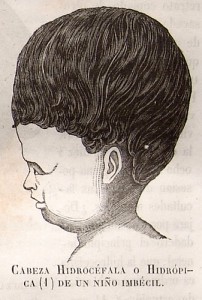 Ed. note: Ben Warf, MD, was just named a 2012 MacArthur fellow, receiving a five-year, $500,000, “genius” award from the John D. and Catherine T. MacArthur Foundation.
Ed. note: Ben Warf, MD, was just named a 2012 MacArthur fellow, receiving a five-year, $500,000, “genius” award from the John D. and Catherine T. MacArthur Foundation.
We know climate patterns can affect crop yields, fish populations in rivers, people’s allergies and more. Now, for the first time, research has linked weather patterns with a brain disorder in babies typically treated by neurosurgeons—one that causes cognitive impairment, spasticity and blindness.
In East Africa, twice a year, at the midpoint between the rainy and dry seasons, rates of hydrocephalus surge among newborn babies. It starts with a fever and sometimes convulsions; if they survive, the babies develop “water on the brain” and their heads enlarge dramatically.
Ben Warf, MD, a neurosurgeon at Boston Children’s Hospital, discovered this during his years as a medical missionary in Uganda. Working with a non-governmental organization called CURE International, he founded a pediatric neurosurgical hospital, doing about 1,000 operations a year—more than half of them for hydrocephalus—on children from Uganda and surrounding countries.
In the United States, hydrocephalus is typically part of a congenital disorder like spina bifida. But Warf found that 60 percent of the cases he and his Ugandan team were seeing arose from infections in newborns.
Working with mathematicians, Warf and colleagues crunched data from nearly 700 such cases against rainfall data for the children’s home villages, generated by the National Oceanic and Atmospheric Administration, and found a clear seasonal correlation. Their study was published recently in the Journal of Neurosurgical Pediatrics.
The red line above indicates rainfall patterns over time: The rainy season occurs at the peaks, and the dry season at the troughs. The infections causing hydrocephalus (shown by the blue line) rise and fall in close parallel, peaking at the midpoint between each rainy season and dry season.
“We discovered, lo and behold, that it was just like clockwork,” says Warf. “Infections occurred at the midpoint between the rainy season and the dry season. Uganda has two rainy seasons each year, so there are four points each year when infections peak.”
These climate dynamics might somehow be affecting the infectivity of microbes causing sepsis in newborn babies, leading to hydrocephalus, Warf and colleagues believe.
And while probing the environmental causes, Warf also developed a one-time operation to treat hydrocephalus that’s changing practice not just in Africa, but in the U.S.
Freedom from shunts
Normally, surgeons place shunts to drain the excess brain fluid, but these need to be maintained and nearly all eventually fail—half of them within two years—requiring the average child to have two or three shunt operations, and some to have many more. That’s almost impossible for children in rural Uganda, for whom a shunt malfunction can be fatal.
Borrowing from some older, abandoned techniques, Warf came up with a minimally invasive procedure. It’s proven so effective that a new NGO called CURE Hydrocephalus, for which Warf is medical director, is helping teach it to surgeons across Africa and in other resource-poor areas of the world. Since children with hydrocephalus often considered to be cursed, CURE’s work has already spared some from suffering ineffective treatments by witch doctors, dying from neglect or being drowned in the river by their families.
And now Warf has brought the operation back to the United States.
Called ETV-CPC for short, it’s two-pronged. The surgeon first makes a small perforation in the third ventricle (one of several fluid-filled cavities in the brain), allowing the trapped cerebrospinal fluid (CSF) to escape. Second, the surgeon cauterizes the choroid plexus, the tissue within the brain’s ventricles that produces the CSF to begin with.
Both steps can be done with minimally invasive techniques, using endoscopes. Outcomes at Boston Children’s Hospital have been so good that shunts (costing about $1,000 each for hardware alone) are now used far less often: 60 percent of as-yet untreated babies who formerly would have received shunts can now avoid them.
Some neurosurgeons were skeptical at first, but Warf’s data have begun to win them over. A national multicenter trial of ETV-CPC is expected to begin over the next year.
It’s a great example of a problem in the developing world inspiring an innovation that can benefit everyone.
“When I went off to Africa, everybody sort of patted me on the back and said, ‘Wow, that’s great, keep it up,’” Warf says. “When I came back, people started saying, ‘Whoa. That may be good for African babies, but how do we know it’s good for American babies?’ My reply, when I speak in public, is that I’ve looked inside the brains of thousands of African babies, and their brains look just the same.”
Warf describes hydrocephalus and ETV-CPC in this video explainer.







